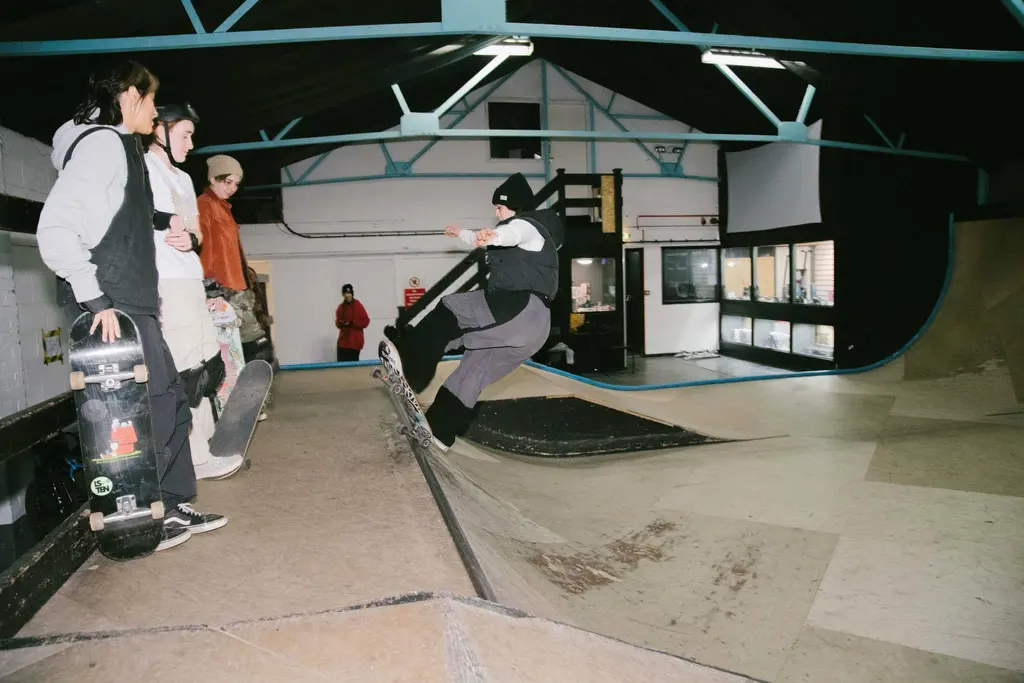How one photographer documented her own, ever-changing image
- Text by Isaac Muk
- Photography by Rosalind Fox Solomon

At the end of the 1980s, Rosalind Fox Solomon was feeling drained. In 1987 and 1988, she had been making her seminal body of work Portraits in the Time of AIDS, where she made portraits of people living with the deadly virus, capturing their uncompromising physical symptoms and care (or lack of) that those living with the illness received from loved ones. It was of course a heavy, draining project – many of the people she had spent time with and made pictures of had died not long after, and she had been a close witness to the isolation and stigma that often young, often queer people experienced as their health deteriorated.
Having also made pictures of people suffering from illnesses in a Chattanooga hospital during the 1970s, the long decade led to a period of reflection for Solomon, and she began questioning her own role as a photographer. “I had made so many young people vulnerable,” she recalls. “I felt an obligation to make myself vulnerable.”

Turning the lens on herself, she removed the clothes that she was wearing to her bare skin, stood in front of the camera, and flicked a trigger that was connected to her camera. Born in 1930 and then into her sixth decade, it was the first of a series of several nude self-portraits that she would take all the way up until 2022.
Her new monograph, A Woman I Once Knew, sees Solomon reflect on decades of her own life via her own, ever-changing image. She had begun taking self-portraits a few years before, when she was at a particular low point in her life. “I remember the first one. It was me on the grass outside my Tennessee home at a time when I felt depressed,” she says. “I think that in a number of them that I was depressed – I think maybe [the self-portraits] gave me some more connection to myself and reality.”
The book features several uncompromising pictures of Solomon, from up-close naked images to shots of her travelling in India in her younger years in a stark examination of her own self, long before ‘selfies’ had become a commonly understood photographic phenomenon. She would only take self-portraits during harder times, which makes for a tough-viewing, often disquieting style of autobiography across the book’s pages. Alongside the pictures are diary-style texts, which provide a deeply personal insight into the life that she has lived, from the breakdown of her decades-long marriage to her son’s health issues.

It’s a wildly different project to the rest of her work, which is best known for her documentary-style photography from around the world with projects in Peru, India, Palestine-Israel, and elsewhere. But she had never thought that the images would ever be seen by the public, and had only really made them for herself. “Why did I take pictures in the nude? It was like bearing my body and my soul,” she says. “I never thought I’d be showing them – it was never my intention when I was taking them.”
In the process, A Woman I Once Knew simultaneously provides a study of the ageing human body, as the decades pass through the book’s spreads. “It is stunning to accept the immense change in a body that occurs over years,” she says. At 94, I am unrecognisable to who I was as a young woman.”
Solomon hasn’t taken a self-portrait in two years – a good sign. “They were always difficult times,” she says. “I’m happy [now], this is a good period, my old age – I haven’t focused on my body recently, I’m probably just comfortable with who I am now.”


Latest on Huck

Clubbing is good for your health, according to neuroscientists
We Become One — A new documentary explores the positive effects that dance music and shared musical experiences can have on the human brain.
Written by: Zahra Onsori

In England’s rural north, skateboarding is femme
Zine scene — A new project from visual artist Juliet Klottrup, ‘Skate Like a Lass’, spotlights the FLINTA+ collectives who are redefining what it means to be a skater.
Written by: Zahra Onsori

Donald Trump says that “everything is computer” – does he have a point?
Huck’s March dispatch — As AI creeps increasingly into our daily lives and our attention spans are lost to social media content, newsletter columnist Emma Garland unpicks the US President’s eyebrow-raising turn of phrase at a White House car show.
Written by: Emma Garland

How the ’70s radicalised the landscape of photography
The ’70s Lens — Half a century ago, visionary photographers including Nan Goldin, Joel Meyerowitz and Larry Sultan pushed the envelope of what was possible in image-making, blurring the boundaries between high and low art. A new exhibition revisits the era.
Written by: Miss Rosen

The inner-city riding club serving Newcastle’s youth
Stepney Western — Harry Lawson’s new experimental documentary sets up a Western film in the English North East, by focusing on a stables that also functions as a charity for disadvantaged young people.
Written by: Isaac Muk

The British intimacy of ‘the afters’
Not Going Home — In 1998, photographer Mischa Haller travelled to nightclubs just as their doors were shutting and dancers streamed out onto the streets, capturing the country’s partying youth in the early morning haze.
Written by: Ella Glossop


